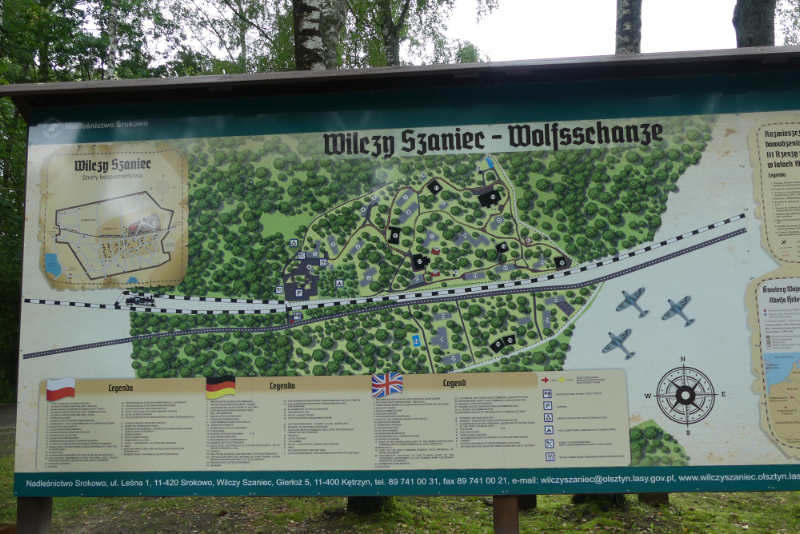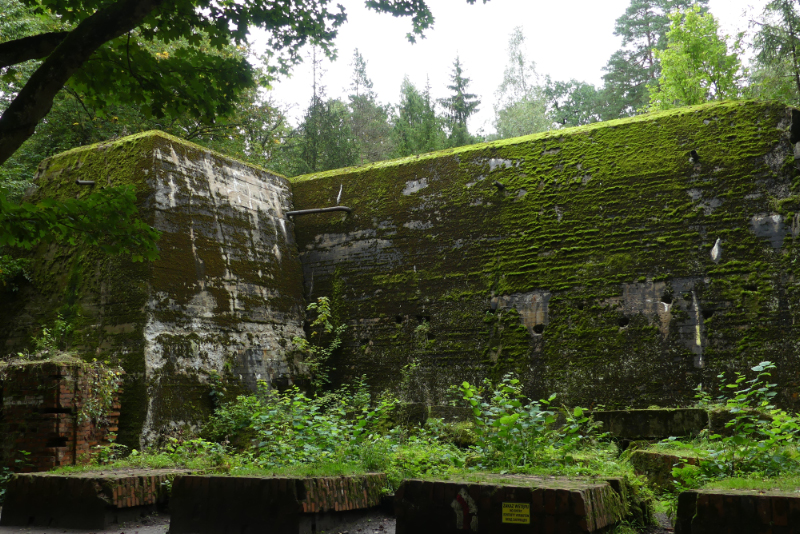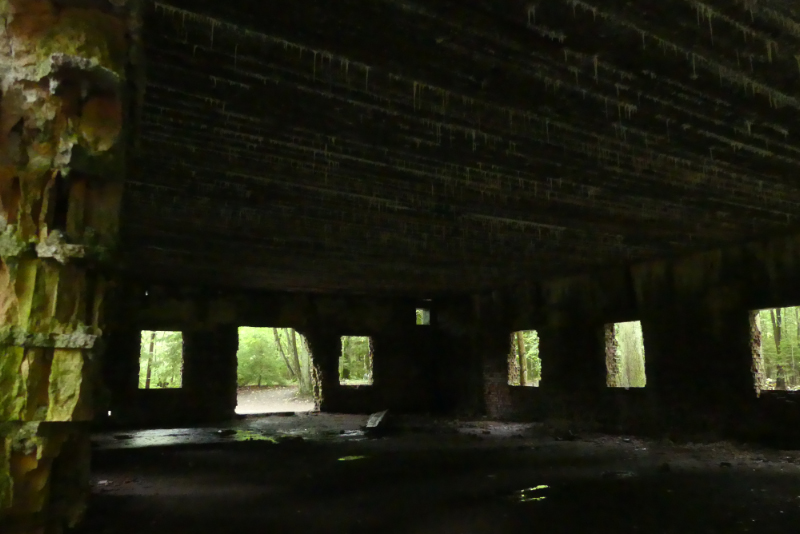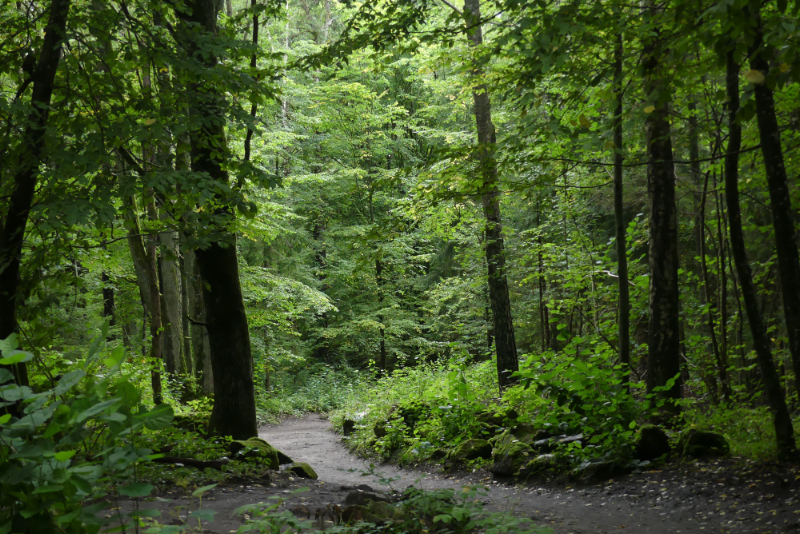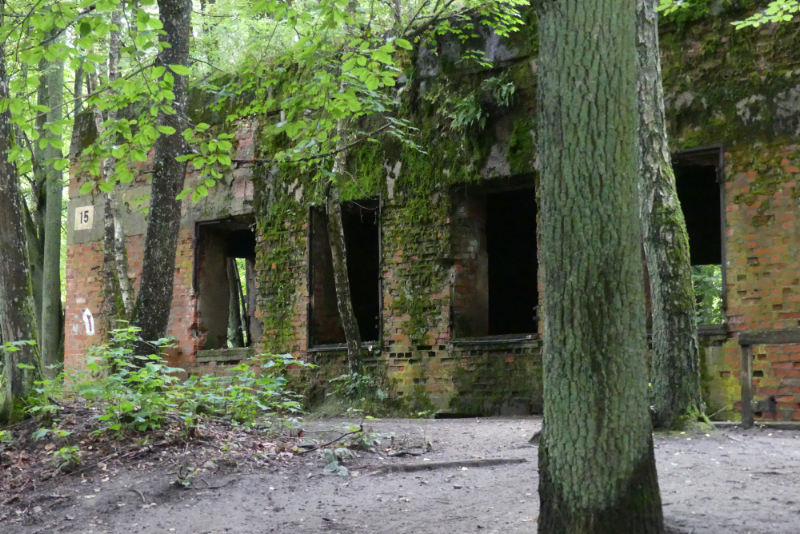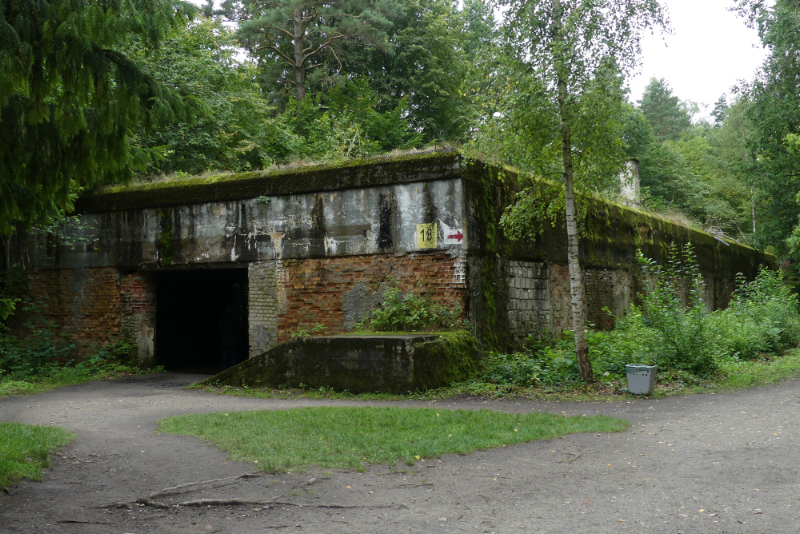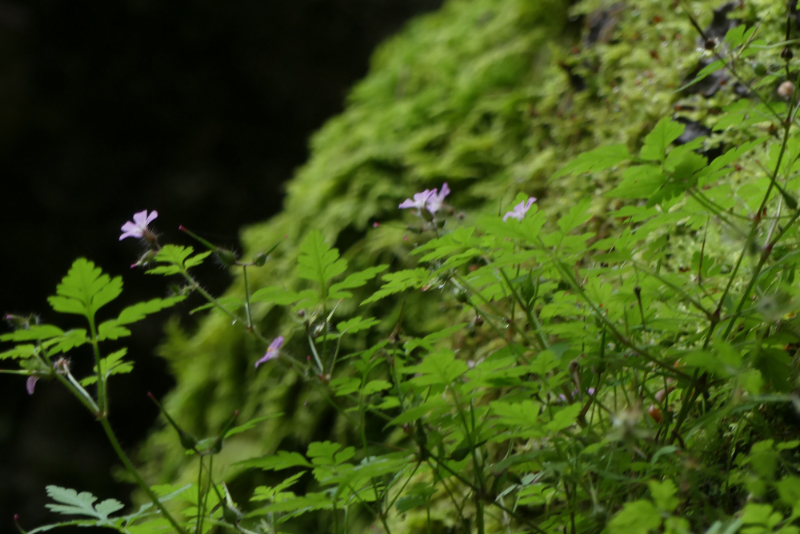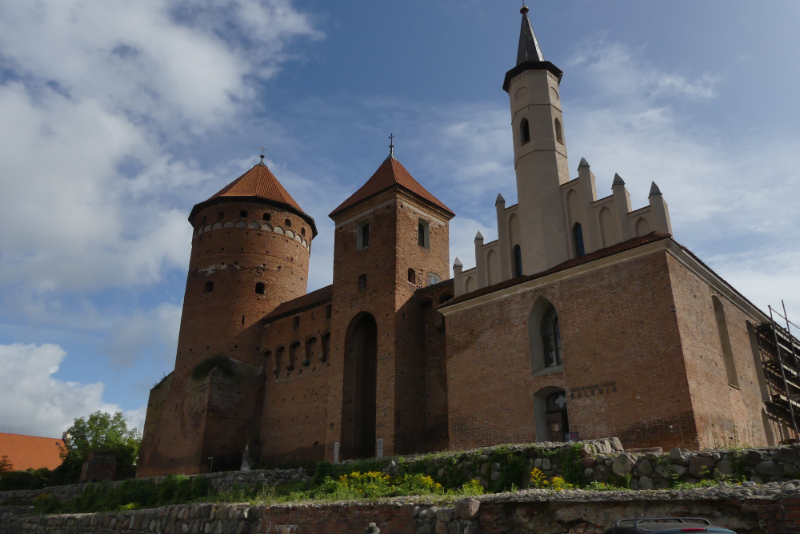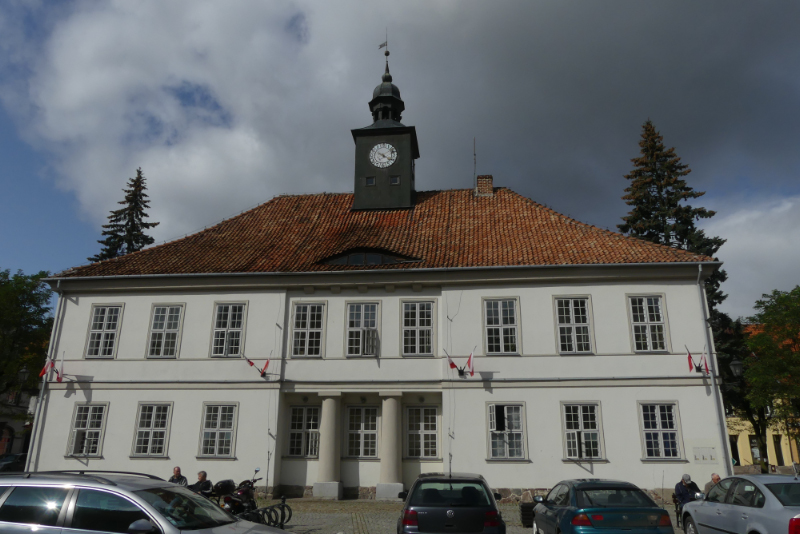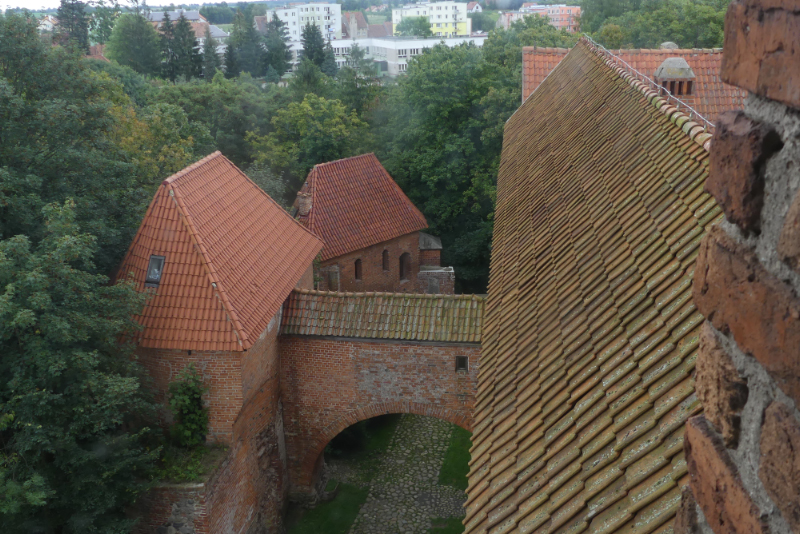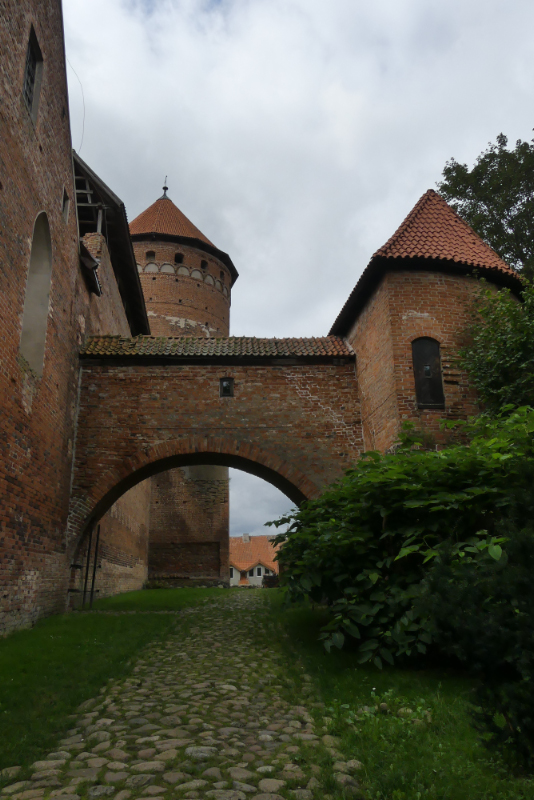Tuesday 5 to Wednesday 6 September
We drove out of Lithuania in the rain, into Poland. It is nearly 6 weeks since we left Poland. Our first destination was to see the Wolf’s Lair, Hitler’s eastern post and bunkers in the Gierłoż forest. The rain stopped for us when we arrived, and the forest was grey and damp. How fitting.
We purchased ‘Wolf’s Lair – a guidebook’ by Stanisław Siemiński and translated by Sylwia Płaszczyńska to help us understand the story.
As Hitler was preparing to invade Russia, he set up a command post in Eastern Prussia, about 8km from the town of Kętrzyn. The location and the lay of the land, surrounded by forests, lakes, bogs, canals and rivers, provided natural protection from the east. An existing railway line running through the middle of the forest determined the best location for building the headquarters.
Hitler used ‘wolf’ in the name for a number of his headquarters: Wolfsschanze (Wolf’s Lair), Wolfschlucht (Wolf’s Glen I and II) and Werwolf (Werewolf) are examples.
We were warned, prior to entering, that the area of the Headquarters was dangerous. Sticking out wires, pieces of concrete, cracks and manholes pose a threat to health and life.
Building commenced in the summer of 1940 and continued until 1944 at a cost of 38 million German Marks.
Initially wooden barracks were constructed as well as concrete bunkers with walls up to 3m thick. In the second stage the wooden barracks were encased in 50cm thick walls and 35cm thick string concrete roofs. Finally, secure bunkers for Hitler, guests and Göring were constructed with 4m thick walls and 6m thick reinforced roofs.
In the autumn of 1944, the situation on the eastern front was getting worse for Germany and Hitler left the headquarters for the last time on 20 November 1944. There was an order to blow up Wolf’s Lair, but that was delayed until January 1945 so that General Hossbah’s Fourth Army could take refuge during their withdrawal. The Soviet army arrived at the site just 48 hours after its destruction.
Hitler had spent a total of 900 days at the Wolf’s Lair and had many notable visitors during his stays.
In the 1950s about 54,000 mines that provided protection around the bunkers were cleared, and the bunkers were open to the public in 1959.
Set deep in the forest, the site is now a mess of broken concrete overgrown by moss, grasses and trees. It was appropriate that the day was grey and bleak – it matched the atmosphere of the location.
We clambered over concrete, crept into empty rooms, tip toed around mud holes and climbed into Göring’s bunker. It was a sombre tour. Hitler was clearly concerned about his personal safety there.
On 22 July 1944 Colonel Klaus Schenk Count von Stauffenberg made an unsuccessful attempt on Hitler’s life. Stauffenberg had come form Berlin for a meeting. He carried with him an activated bomb in a briefcase, which he placed under the meeting table and close to Hitler. The bomb killed one person and a further three died from their injuries, however Hitler came away with minor injuries.
It is thought that the bomb failed to kill Hitler because the meeting had been moved to a lighter bunker where there was an outlet for the gases through the windows, and the large oak table lessened the impact of the bomb.
We spent the evening at the Zamek Reszel Kreativ Hotel, which was actually a room in the Reszel Castle. The climb up very narrow and somewhat wobbly stairs was worth the experience of staying in the castle, with a great view over the courtyard.
We found decent coffee in the tiny medieval town of Reszel, which also boasts the beautiful brick Gothic Church of Sts Peter and Paul and an elaborate Town Hall.
Reszel was conquered in 1241 by the Teutonic Knights, who built a small wood and earthen fort on the banks of the River Sajna. Construction of the castle commenced around the middle of the 14th century. It was later converted to a hunting lodge, although the building declined in the 18th century and was further destroyed by two fires in the early 19th century.
In 1811 Barbara Zdunk was sentenced by the Prussian court to death for witchcraft and setting the castle alight in 1807. The trial lasted three years. There was some doubt if Zdunk was guilty, however she was sentenced to burn, but was mysteriously strangled before the process. The trial is sometimes described as the last burning of witches in Europe.
We toured the castle, which has an entire tower set aside to display various types of torture from the middle ages. It was very gruesome.
We drove on to Gdansk, staying as much as we could off the main, busy highways and through some beautiful forests and farmland.
e_header.jpg)

